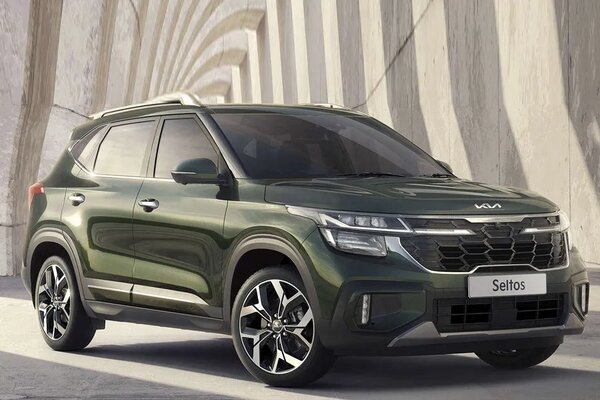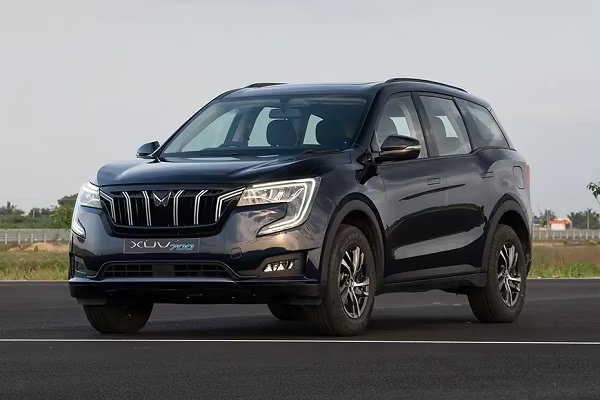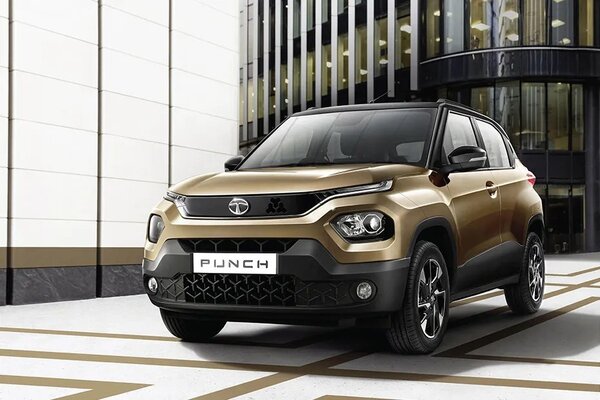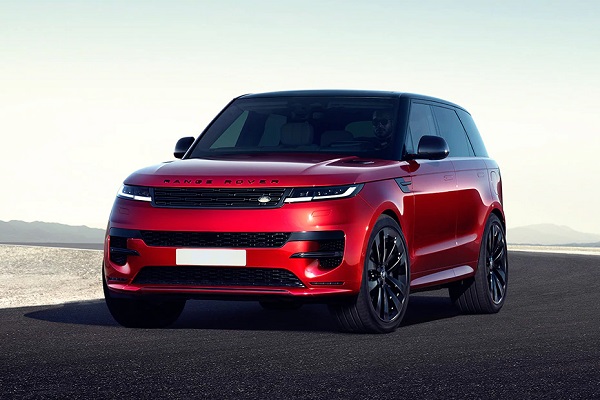Grand comeback?


Ever since its launch, the Honda CR-V has been the automatic choice for buyers looking for an easy-to-drive sports utility vehicle (SUV). While the Suzuki Grand Vitara has been around for the past two years, it never really gave Honda anything to worry about simply because it wasn't as appealing as the CR-V. But being the largest car manufacturer in India, Maruti won't give up so easily.
Now in an effort to get to the top of the urban SUV pile, Suzuki has put a bigger and more powerful engine in the Vitara's bay and has added a host of other improvements. But with a price hike of nearly ₹2.5 lakh, do the improvements justify the extra dough you have to shell out? Considering the CR-V is still a whopping ₹6 lakh dearer, the Vitara makes a good case for itself. So can the Vitara topple the CR-V as India's favourite petrol-engined SUV?
Trending Cars
From the driver's seat
The Vitara's interior design carries a strong Suzuki stamp over it. You can see parts of the SX4 and Swift all around — the power window switches and the steering wheel all hail from the same parts bin. The first impression is not too inviting especially compared to the CR-V, which feels much more expensive than the Grand Vitara.
Hard plastics abound in the Vitara and the all-black interiors are definitely not something you expect from a ₹17-lakh car. However, the interiors do deliver a lot of comfort. The front seats are wide and very supportive to the shoulders, back and thighs and are in fact, more comfortable than the Honda CR-V's. The driving position is good too, with a steering and driver's seat that can be adjusted for height. The central console design is attractive as well with its deep red illumination.
The CRV's two-tone interiors look fresh and crisply designed. The dash is neatly laid out and there is much more of a quality feel here, just like in other Hondas.
In addition, the CR-V's cabin is substantially more spacious and much better put together. The dashboard design frees up a lot of space between the front seats. The contoured seats are very supportive and cushion your body in the right places. It is also easy to find the perfect driving position in the CR-V thanks to a host of adjustments available, like seat height adjust and reach and rake adjust for the steering.
Space and practicality
The CR-V and Vitara are both big cars. But the CR-V, with its wider dimensions, has the edge. That doesn't mean the Vitara is short on space — it is adequately roomy with spacious and comfortable seats. The rear seats are particularly so with their high seating position and a reclining backrest. They also have the right amount of cushioning, even if they are a bit flat and not too well-bolstered. But the upside is that the third passenger gets a better seat and is quite comfortable. Legroom is adequate and the higher seating provides more leg space but the black interiors are a bit dreary.
The CR-V's cabin is a nice place to be in. The wide front seats are both comfortable and supportive. Rear seat comfort is also terrific but the seat cushions are a tad stiff, unlike the Vitara's pillowy feel. The seat base is a bit short too. However, like the Suzuki, the seat angle can also be adjusted.
The 40:20:40 split rear seat on the CR-V is extremely versatile, offering all kinds of seating combinations. Besides, the lower stance means that it is easier to get in and out of it. You get the added bonus of a totally flat floor, front and rear. The Honda is also full of extra storage spaces like the second glovebox, big doorpad pockets and the massive central storage box.
Luggage space is substantially greater — 556 litres against 395 litres on the Suzuki, with rear seats upright. The Vitara's seats fold 60:40 as compared to the CR-V's much more flexible combination. What's more, you can slide the rear seats in the Honda to increase the luggage area. You also get a hard parcel tray that splits the boot in half, a useful touch when you want to separate your heavy and light luggage. This also allows you to get at luggage or a spare tyre at the bottom without having to unpack the whole boot.
Performance
The highlight of the Grand Vitara is its new engine. It now got a 2.4-litre petrol, as compared to the puny 2.0-litre unit on the earlier car. It also has hi-tech variable valve timing, which is quite similar to Honda's i-VTEC system. The motor now puts out a healthy 163.5 bhp of power and 23 kgm of torque. As a result, the Vitara is much more brisk than its older avatar.
It now surges forward in a stronger way. Throttle responses have improved across all engine speeds as compared to the older model and the Vitara feels more enthusiastic now. Even low-end responses are decent and it pulls from low speeds smartly. The Vitara proved to be quite quick in our tests. It reaches 100 kph in a very respectable 11.73 seconds.
Nonetheless, even with its much-improved performance, the Vitara comes only second to the smooth and rev-happy motor in the CR-V. The 161 bhp motor is very smooth in its power delivery and, unlike other motors, it becomes smoother as you rev it. Below 3500 rpm, the Honda doesn't feel as responsive as the Grand Vitara and progress is not that rapid. Like most Honda cars, you have to work the engine hard to extract the most out of it.
The highlight of this engine is its exceptional top-end performance. The i-VTEC motor really gets into its stride once it gets past the 4000 rpm mark. The CR-V crosses the 100 kph mark in a scant 10.96 seconds and will reach a top speed of 207 kph, which is truly exceptional for an SUV.
Even in our in-gear acceleration test, the CR-V proved much quicker than the Vitara. The Honda motor is clearly a step ahead of the Suzuki engine in terms of overall refinement. The Vitara's engine is quiet enough at idle and isn't very audible even at cruising speeds, but it tends to become a bit loud when it crosses the 3500 rpm mark.
The Honda's gearbox feels very refined and smoother than the Vitara's. The Honda's six-speed manual is a joy to use.
Ride and handling
Both the cars come with four-wheel-drive transmission which allows owners to occasionally indulge in a spot of off-roading. For such occasions, when you want to tackle rough and slippery dirt tracks, the Vitara is the one to have. Its permanent all-wheel-drive system and generous ground clearance allows it to scoot away from the CR-V when the going gets rough. The Grand Vitara is clearly the better off-roader of the two.
The stiff suspension ensures that it is a good handler even on the road. It corners with ample agility and you feel always well planted, like you would in a saloon. The Vitara also feels more secure in the wet than the CR-V, thanks again to its permanent four-wheel-drive system. Additionally, the well weighted, responsive and accurate steering, when coupled with Vitara's good body control, inspires confidence. But the stiff suspension compromises the ride comfort.
The Grand Vitara feels bumpy on anything other than a smooth surface and we wish the ride was a little more supple. While the tall suspension has the ability to absorb large potholes and really poor sections of the road well, you still feel most undulations on the road. Despite the large tyres, the Vitara's ride over broken surfaces is skittish.
Compared to the Vitara, the CR-V is a very enthusiastic handler and feels more like a sporty hatch than a large SUV. Turn into a corner at high speed and the fairly direct steering and tight body control inspire such confidence that even some saloons can't match its handling prowess. With disc brakes all round on both the cars, stopping power is great and hugely confidence- inspiring.
However, like the Grand Vitara, the CR-V's suspension is on the stiff side. There is a hard edge to the ride and sharp road bumps are easily felt. Overall, the CR-V has a flatter and more consistent ride and you are not tossed around like in the Grand Vitara.
Buying and owning
The Vitara retails for ₹17.23 lakh, which is substantially lower than the CR-V's ₹23.52 lakh, and comes loaded with decent equipment. However, we missed features like a powered driver's seat, electric folding mirrors and leather seats which are standard on the CR-V. The CR-V also offers dual-zone climate control, auto-folding mirrors, powered driver's seat, telescopic steering wheel and sunroof as standard.
Suzuki offers a standard warranty of two years, limited to 40,000 km. This can be extended by another two years and 80,000 km. Honda offers the same warranty package as the Suzuki.
The Vitara returned 6.8 kpl and 10.2 kpl in our city and highway fuel consumption tests respectively. In comparison, the Honda did better with 7.3 kpl and 11.3 kpl in the city and on the highway. The Grand Vitara's trump card is its price, which is a whopping ₹6 lakh cheaper than the CR-V and makes the Honda look completely overpriced.
Honda spare parts usually cost more than Maruti's, but Honda's reliability is top-class. So trips to the workshop will be a rare experience for the CR-V. While the Honda may have better resale value, the CR-V's inflated price tag makes it much more expensive to own.








 1497 cc
1497 cc Multiple
Multiple










